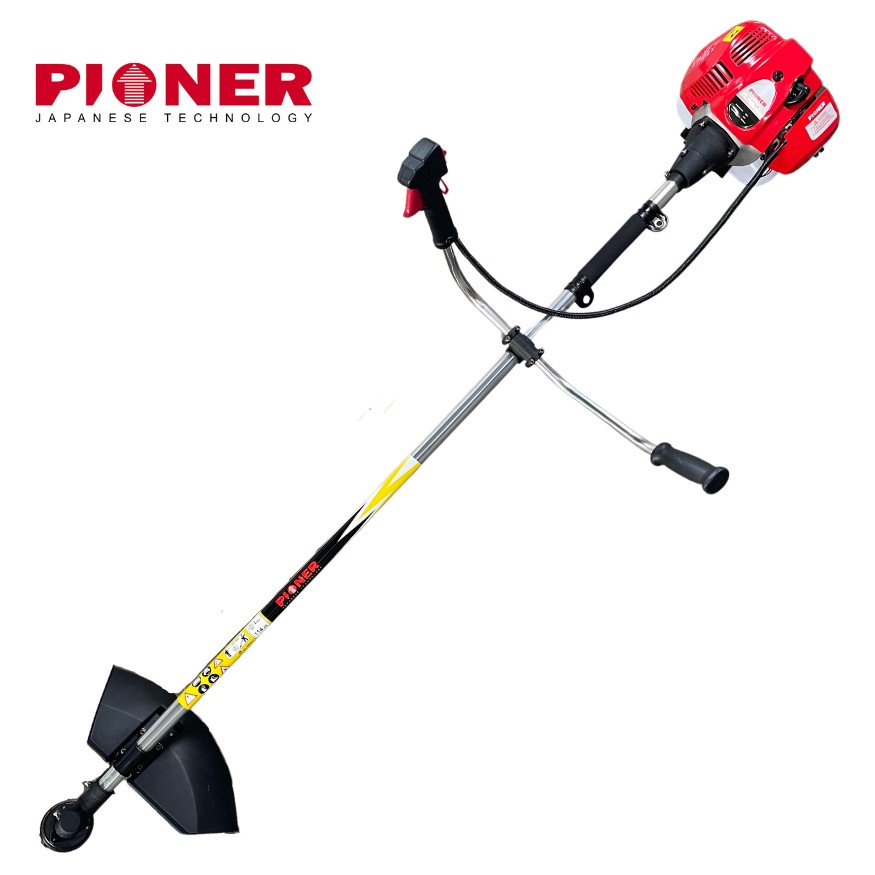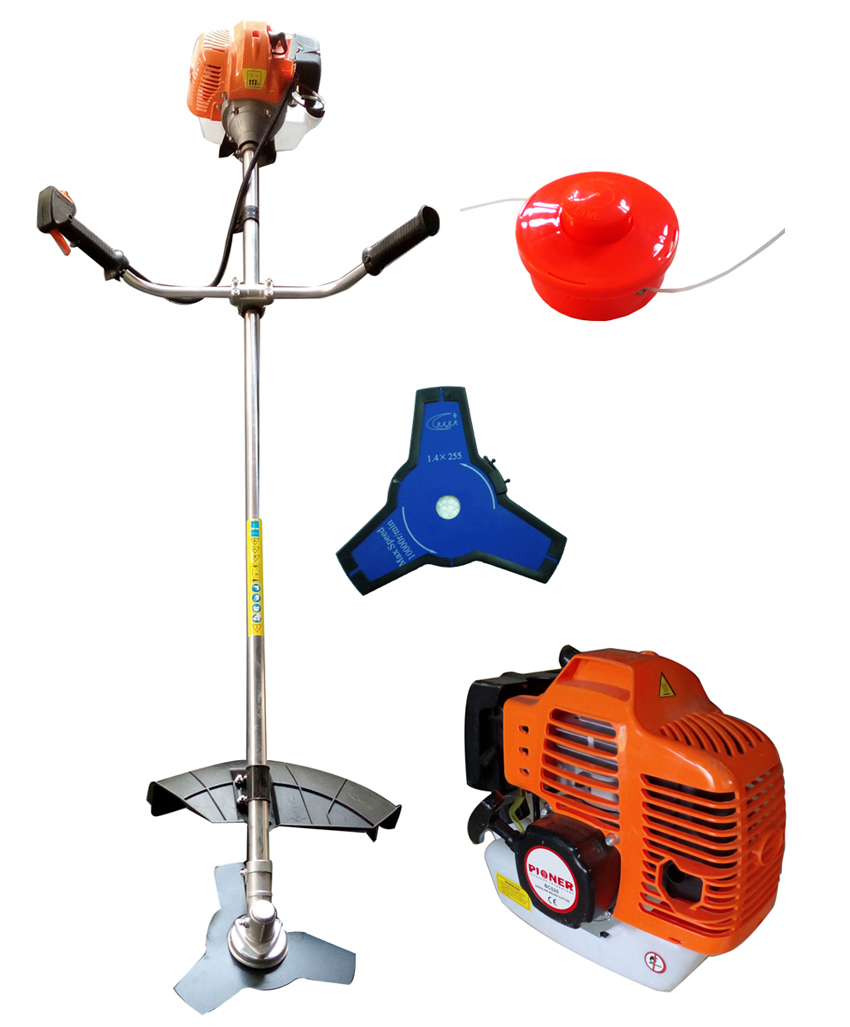If you have a garden, field, or are involved in agricultural work, you already know how essential a grass trimmer is. From simple trimming around trees to cutting large areas, a good trimmer can save you a lot of effort and time. But the question is: which one should you choose?
In this article, you'll discover the main categories of trimmers, the advantages of each option, and what to consider before making a purchase.

What Is a Grass Trimmer and Why Do You Need One?
A grass trimmer is a cutting tool that allows you to easily clean areas unreachable by lawn mowers. It’s ideal for:
- Cutting grass around trees, edges, fences, or other obstacles.
- Trimming lawn borders and edges.
- Clearing hard-to-reach, small, or sloped surfaces.
Types of Grass Trimmers: Which One Suits Your Needs?
The market now offers a wide range of grass trimmers, also known as brush cutters. These tools fall into three main categories:
1. Electric Grass Trimmers (corded)
Electric trimmers are ideal for small gardens and residential use. They are lightweight, quiet, and require no engine maintenance as they run on electricity.
Advantages:
- Low purchase cost
- No need for fuel or oil
- Quiet and environmentally friendly
Limitations:
- Depend on a power outlet
- Limited mobility
- Best suited for homeowners with small gardens
2. Battery-Powered Grass Trimmers
Battery trimmers offer the perfect balance between ease and freedom. They don’t require cords or fuel and offer autonomy—especially if you have a spare battery.
Advantages:
- Freedom of movement without cords
- Quiet and emission-free
- Easy start—no pull cord
Limitations:
- Limited by battery life
- More expensive than corded models
- Suitable for medium-sized gardens
Pro tip: Choose a model with a battery that’s compatible with other tools (“one battery for all” system).
3. Gasoline Grass Trimmers
Gasoline trimmers are the most powerful option of the three. If you have large areas, rough terrain, or dense vegetation, this is your tool.
Advantages:
- Very powerful—can cut through anything
- Not dependent on cords or battery life
- Ideal for professional use and large properties
Limitations:
- Noisy
- Require maintenance (oil, filters, fuel)
- Heavier to operate
Best suited for professionals, farmers, and those with extensive land.

What to Look for Before Buying a Grass Trimmer
When buying a grass trimmer, don’t just focus on the type (gas, electric, or battery-powered). Technical specs and ergonomic features can make the difference between an easy, pleasant gardening experience and a tiring or ineffective one. Here’s what to check—step by step:
Motor or Battery Power
Power is one of the most important factors for performance. Depending on the kind of work you want to do, you should choose accordingly:
- For light tasks: For trimming soft grass or lawn edges, power of 300W–500W (or 18V for battery) is sufficient.
- For medium-duty tasks: Choose a tool with power over 600W or 36V battery for denser vegetation.
- For heavy-duty/professional use: Go for gas-powered models with over 1.5 HP or professional-grade battery tools.
Pro tip: Buying an underpowered tool for heavy use will strain the motor and reduce its lifespan.
Type of Cutting Head
The cutting head does the “dirty work.” Depending on your needs, the attachments vary:
- Nylon line: Most common; suitable for lawn grass and soft vegetation. Flexible and safe around trees or walls.
- Metal blade or disc: For tough weeds, brambles, thick stems, and small bushes. Offers more cutting power but requires experience.
- Multi-attachment head: Some models allow changing attachments depending on the job—very handy if you want a multitool.
Pro tip: Prefer models with interchangeable heads to cover more needs.
Tool Weight
Weight matters—especially if you plan to use the tool for extended periods.
- Lightweight models (under 4 kg): Ideal for small gardens and occasional use.
- Mid-weight (4–6 kg): Suitable for most residential environments.
- Heavy models (over 6 kg): Usually professional; require shoulder strap or harness for comfort.
Pro tip: Don’t overlook the weight—especially if you're inexperienced or the tool lacks a support system. You’ll tire quickly.
Ergonomics and Handling
A tool that feels right in your hands is just as important as power. Pay attention to the following:
- Handles: Look for soft, anti-slip grips. They offer better hold and absorb vibrations.
- Anti-vibration features: Protect your hands and shoulders—especially during prolonged use.
- Handle type: “Bike-style” handles provide better control over large areas; “D-shaped” handles are better for tighter spaces.
- Adjustable height/angle head: Allows you to tailor the tool to your body and work comfortably without bending.
Pro tip: The more ergonomic the tool, the easier and more comfortable your work will be.
Spare Parts and Service
A grass trimmer is an investment. If something breaks or needs maintenance, you need support. Focus on the following:
- Availability of spare parts: Make sure the brand has parts available in the Greek market (lines, blades, heads, filters, etc.).
- Technical support: Choose brands or stores that offer service, warranty, and repair options.
- Maintenance frequency: Electric and battery models require less maintenance than gas-powered ones.

So, Which Grass Trimmer Should I Get?
To make the right choice, ask yourself:
- What kind of jobs do I need it for (light or heavy)?
- How often will I use it?
- Do I want something light and simple or a professional-grade tool?
- Is there reliable support from the brand or retailer?
Take some time to research and you’ll choose a trimmer that will make your gardening tasks easier, faster, and—most importantly—less tiring.
At Sarimen.com, you’ll find a full range of trimmers—from affordable solutions for amateurs to professional tools for agricultural use—with immediate availability and technical support.